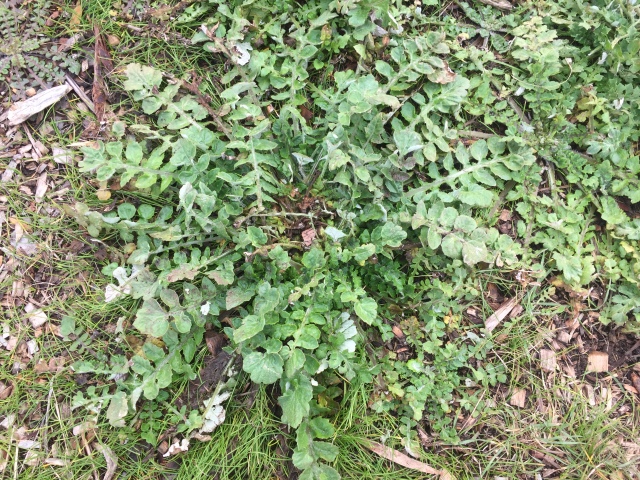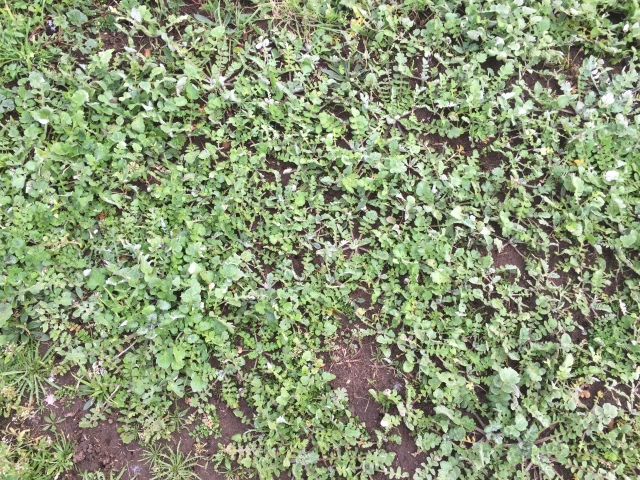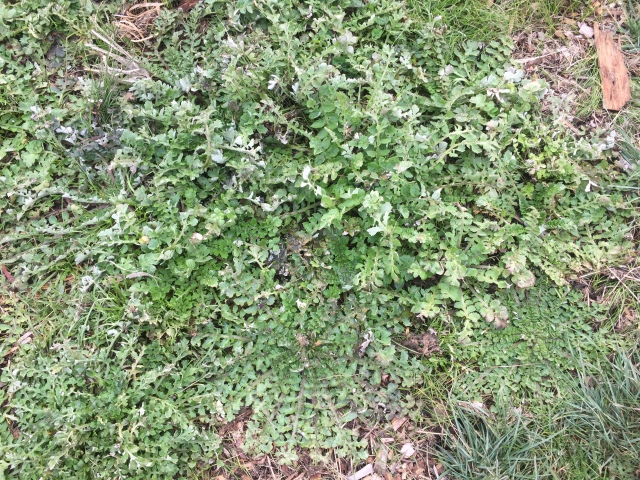Capeweed’s botanical name is Arctotheca calendula; the plant is also known as Cape Daisy Weed, Cape Dandelion – native of South Africa.
Last month gardening friend K told me:
‘You will notice a lot of Capeweed at the garden if you make it there. I have been noticing it all over the neighbourhood and beyond this year in places I have never seen it before (That and another oxalis!). My hort. teacher told us he had been to a rural property that had Capeweeds over a metre or more in diameter! Not hard to imagine once you see some of the larger ones at the Warrane Garden.’
I found this fascinating because Capeweeds were not on my radar. Being curious, I walked to Warrane’s Community Garden in Heemskirk street to see this proliferating weed and was stunned by the scale of the ‘invasion’.



On my previous visit it had been the Mallow weed which featured, but while there was some Mallow growing, it was working hard to make its way through the soil-covering Capeweed.

Herbiguide provides the following information ‘Capeweed is an autumn/winter germinating, stemless, rosette forming annual herb with broad, deeply lobed, succulent, leaves 30-250 mm long that have white furry hairs underneath and form a dense rosette. Yellow petalled daisy flowers about 40 mm diameter with a black to brown centre appear in spring on individual 200 mm stalks. The tiny woolly fruits are topped by minute scales. It is a common weed of pastures, crops and roadsides, but also quite common in disturbed bushland. Grows rapidly in warm temperatures often smothering companion plants in early winter. Flowers late-winter/spring. Dies off with onset of summer.’
Apparently Capeweeds like sandy soils but where much of these plants/weeds are growing in the Community Garden, the soil is rich with humus. The Kitchen Garden Foundation reports the presence of Capeweed can indicate the soil lacks calcium and magnesium. I wonder if a soil test has been undertaken.
Long term blog followers know I am interested in weeds as food. Is Capeweed edible? According to the ‘talkingplants’ blog. ‘While it can be eaten by stock, young plants may poison and a high intake will taint milk. Sadly you can’t eat it: Capeweed is generally considered a poor and potentially disagreeable food for humans.’ I will take that as a NO answer.
If you have Capeweed growing in your lawn or garden then the ‘green life soil’ site explains how to naturally get rid of Capeweed. But remember that this weed dies off in summer – just make sure it’s flowers don’t turn to seed first or you can be sure the spread of this weed will continue.

I have what can only be described as a crop of these weeds in my lawn! I’ve been told it will take over the lawn and kill all the grass completely if not managed effectively. Eeek. You’re welcome to come and experiment with any weedkillers (organic or otherwise), if you want!!
LikeLike
They will die off over summer. In the meantime make sure the lawn gets mowed each time before they flower and go to seed. I’ve seen much worse than your lawn. The other thing is not to mow too low. That always guarantees weeds take over
LikeLike